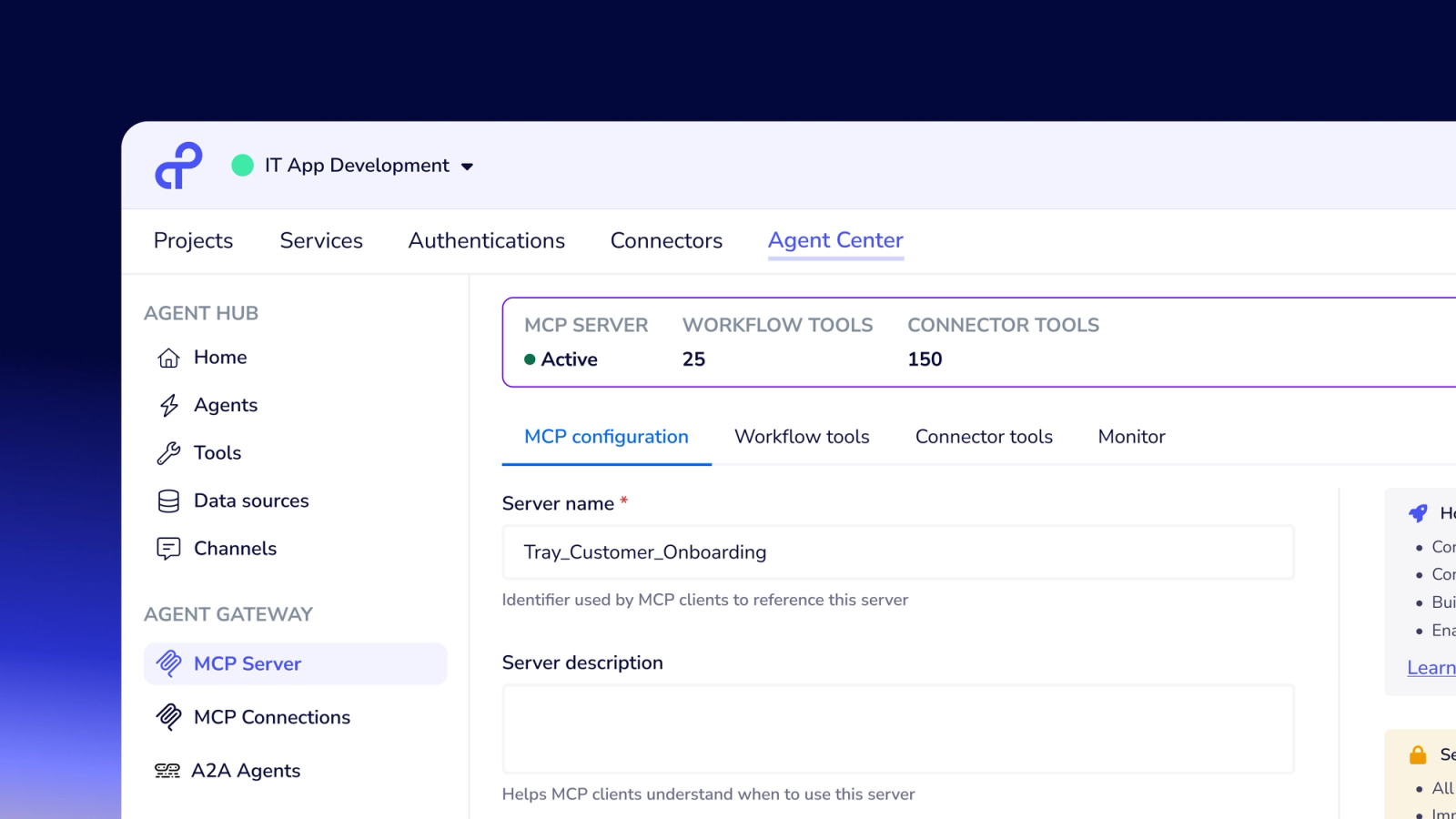New product launch: Tray Merlin Agent Builder addresses agent adoption
Overview
Most AI agents never make it past the prototype. Teams build them, then no one uses them.
This session shows you how to address the adoption gap with new features in Tray Merlin Agent Builder.
You’ll see a live demo of the latest release and learn how to connect your agent to your data, give it memory, choose the right model, and launch it where your team already works.
What you'll learn
- How to give agents memory that sticks: Let your agent hold onto what users said before. Across sessions. Across tools.
- How to connect to Slack, Google Drive, and more: Bring in documents, messages, and context with just a few clicks.
- How to choose the right LLM for every agent: Select the best model for each task or bring your own. Change models fast without rebuilding anything.
- How to launch agents where people actually work: Use Slack. Use Teams. Use the web. Use the API. Interact with users where they are.
Want a deeper look at how teams are building agents?
We shared this during the session. Get the AI Agent Strategy Playbook to compare the common approaches and see why more teams are choosing AI-ready iPaaS to get agents into production.
Session Chapters
- Four ways teams build agents (and what fails)
- Why agents don’t get used
- Demo: Connect data sources in seconds
- Demo: Use Tray Knowledge Engine to power your agent
- Demo: Built-in memory across sessions and users
- Demo: Choose the right LLM for every agent
- Demo: Launch agents in Slack, Teams, and more
Featuring


More like this

Take control of MCP with Tray Agent Gateway
Watch how IT keeps MCP secure, centralized, and governed to reduce shadow MCP risk
2 Presenters

Tray First Look: Agent Hub
The first catalog of reusable building blocks that turn pilots into production agents
2 Presenters

What to do with your second agent
Learn from Tray.ai CEO Rich Waldron and Amalgam Insights CEO Hyoun Park on how to master scaling AI agents, from orchestration and ROI to scalable deployment.
2 Presenters
